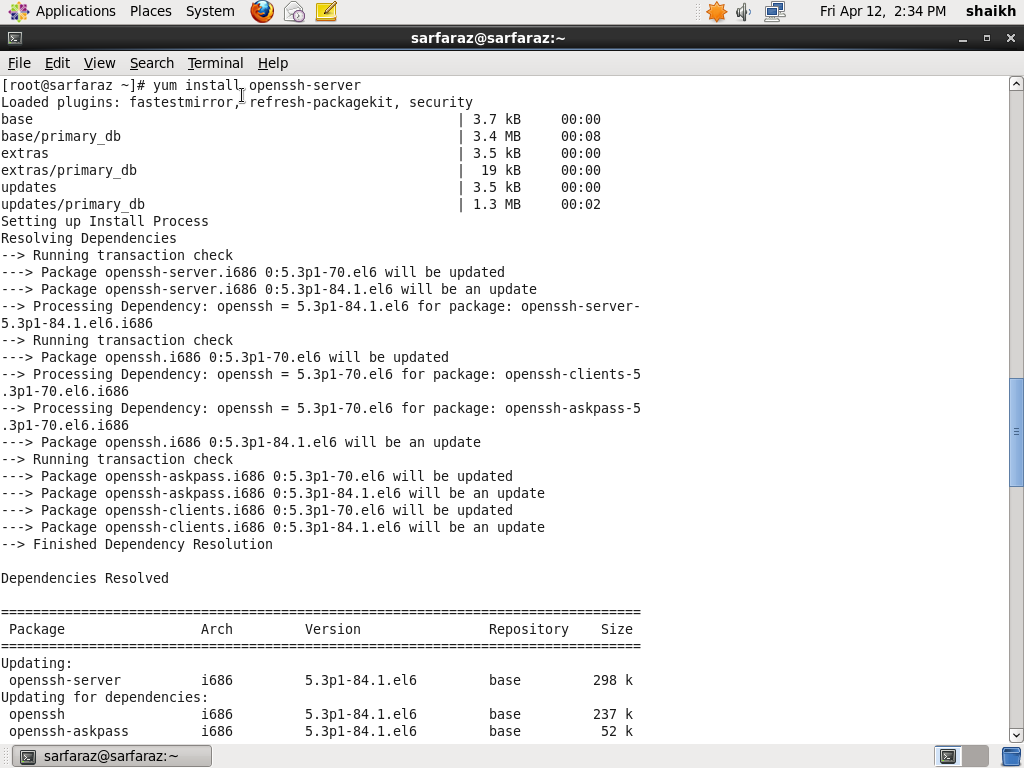- Install Magento 2 On Centos 7
- How To Install Freeradius 2 On Centos 6 0
- How To Install Apache 2 On Centos
- CentOS 6.6 & FreeRadius 2.1.12; Centos 6.6 Minimal & Beyond Trust's Power Broker Identity Services aka Likewise; Centos 6.6 Minimal & Google Authenticator; CentOS 7 1511 and ntpd; CentOS 7 1511 Minimal oVirt Template; CentOS 7 1511 Minimal x86_64 Base Installation Guide; CentOS 7 1611 Minimal x86_64 Base Installation Guide; CentOS 7 and Cockpit.
- From this tutorial you will learn the step by step process of installing Radius Manager 4.1.6 in CentOS 7 along with troubleshooting tips. For detailed commands.

Install and Setup Free RADIUS on Cent OS 5 Cent OS 6 and Ubuntu 11. Everytime you add a client or change a value in the config files you need to restart radius like this: CentOS: service radiusd restart Ubuntu: service freeradius restart Add a test user to the radius database, first you need to login to your mysql radius database: mysql -uroot. How to Install the Radius Client on the CentOs. How to install FreeRadius on CentOS Server; Posted by juni on April 29, 2014 in CentOs, PPTP, RadiusClient. Description: In this tutorial we have explained, how to authenticate the PPTP user from Radiusclient rather than the PTP traditional file authentication on CentOS. I will explain how to make easyhotspot in centos 6.4, based on my experiment. I divide it into 4 parts, to make it more easily understood. Install Apache, PHP and Mysql.
In our previous guide, we covered the installation of Zabbix Server on Ubuntu 18.04. This is a continuation guide on Zabbix monitoring of your entire Infrastructure – Linux systems, Windows servers, network routers, network switches e.t.c. So let’s get started with how to Install and configure Zabbix agent 3.4 on CentOS 7.
For Ubuntu servers, check How to Install and configure Zabbix agent on Ubuntu 18.04/16.04

Zabbix agent is a program developed in C. It runs on various supported platforms, including Linux, UNIX, and Windows. The work of Zabbix agent is to collect data such as CPU, memory, disk and network interface usage from a device. It has a small resource footprint considering that monitoring configurations are centralized on Zabbix server.
How Zabbix agent works
Zabbix agent can do both passive (polling) and active checks (trapping). The checks can be performed at an interval or based on specific times schedule. Here is the difference between passive and active checks:
Passive checks (polling):
- Zabbix server (or proxy) requests a value from Zabbix agent
- Agent processes the request and returns the value to Zabbix server (or proxy)
Active checks (trapping):
- Zabbix agent requests from Zabbix server (or proxy) a list of active checks
- The agent sends the results in periodically
The image below from Zabbix may help visualize passive and active checks in action:
How to Install Zabbix agent on CentOS 7
Below steps are used to install Zabbix agent on CentOS 7
Step 1: Add Zabbix repositories
Add Zabbix 3.4 repositories using the commands below:

Install Magento 2 On Centos 7
Once the repo has been added, install Zabbix agent by executing the following command on your terminal.
Step 2: Configuring Zabbix Agent
Zabbix agent configuration is /etc/zabbix/zabbix_agentd.conf. Edit
Start zabbix-agent after making the change, also enable the service to start on boot:
You can check service status using the command:
If you have firewalld enabled, allow port 10050/tcp on the firewall. This is used by Zabbix agent daemon.
You can check service port if listening using ss or netstat commands:
Step 3: Add host to Zabbix Server
Login to admin Zabbix server interface, and go to Configuration > Hosts > Create host. Provide the following information:
- Host name of the server to be monitored
- Visible name for the server to be monitored.
- Select the group or add a new group for “Groups” field.
- IP address
- Zabbix agent service port -default is 10050
How To Install Freeradius 2 On Centos 6 0
Then go to Templates tab.
1. Click the select button under Link new templates section
Select the templates you want to use:
How To Install Apache 2 On Centos
2. Once you have selected the templates, click on the Add link to link templates to your target systemAfter the templates are linked, they’ll appear on the Linked templates section
Update the setting using Update button.
After few minutes, monitoring data will be collected and you can visualize them using Zabbix graphs. Default host graphs can be accessed on
Monitoring > Graphs > <Host|Graph>
Below are the Ram and CPU utilization graphs for the host we added earlier.